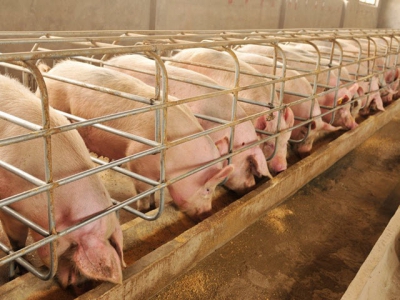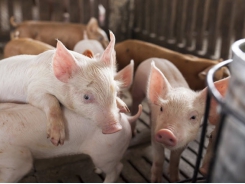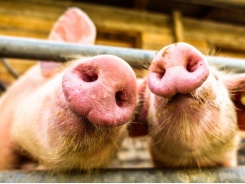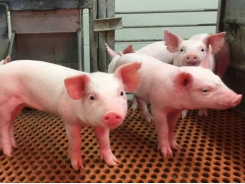Study shows viruses inactivated by porcine plasma processing

Spray dried porcine plasma (SDPP) producer, Darling Ingredients, continually runs tests to ensure virus inactivation through processing of that ingredient.
SDPP tends to be used in weaning feeds to stimulate feed intake and piglet growth. It is also used in pet food and there is an increasing use of porcine plasma in both fish and broiler chick feed; it has been suspected of being a vector for virus transmission.
Lourens Heres, manager, global technical support, Darling Ingredients Inc, was presenting at the International Feed Technology Congress (IFTC) at VICTAM 2019 on the latest findings of investigative work the company had done in conjunction with Wageningen Bioveterinary Research into various processing steps in the production of spray dried plasma to ensure virus inactivation.
We caught up with him after his talk.
The company, particularly in times of emerging animal disease like porcine epidemic diarrhea (PEDV) and African swine fever (ASF) is continuously performing virus inactivation studies, often in precompetitive research arena with other suppliers. “We all want to produce safe plasma. We can work together to create a big body of evidence”
In terms of the study done with Wageningen, the team evaluated different viruses.
“We wanted to have a representation of various viruses that are around and that can occur now or in five years including PED virus, an adenovirus as well as a Porcine Sapello Virus that is comparable to foot and mouth disease.”
Findings
None of the viruses was left in the end product but the processing steps used to kill the viruses differ. “One virus is killed through the spray drying process; another virus is inactivated by increasing the pH, while another is inactivated during storage over two weeks.”
Animal by-products are often suspected in virus transmission, he continued. “A lack of knowledge around the production of such products is the first reason why people have their doubts.”
The ongoing evidence that SPDD is save, that there are no viruses in the final product due to the processing steps involved in its production allows the producer to convince its customers to continue the use porcine plasma, he said.
In September last year, the Chinese authorities took measures to prohibit the use of porcine plasma in pig feed in the wake of the ASF outbreaks. Even though the Chinese government has since lifted the ban on the back of studies confirming the production process renders SDPP safe, Heres believes it will take some time to establish trust in that particular market around the use of such plasma products in feed.
Có thể bạn quan tâm
Phần mềm

Phối trộn thức ăn chăn nuôi

Pha dung dịch thủy canh

Định mức cho tôm ăn

Phối trộn phân bón NPK

Xác định tỷ lệ tôm sống

Chuyển đổi đơn vị phân bón

Xác định công suất sục khí

Chuyển đổi đơn vị tôm

Tính diện tích nhà kính

Tính thể tích ao hồ




 How to produce pigs without using a high…
How to produce pigs without using a high…  Grant to launch new swine biomedical research center
Grant to launch new swine biomedical research center